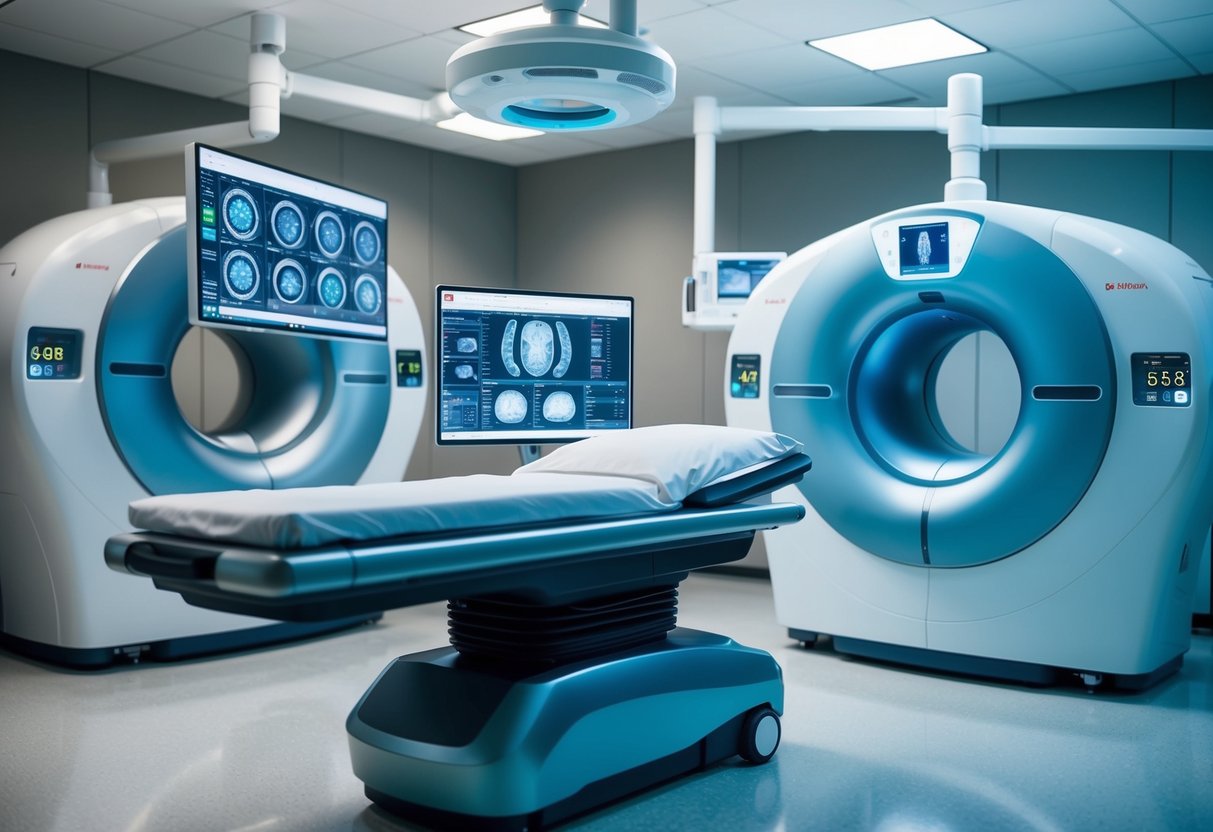
Monitoring and Predictive Analytics in Healthcare
Advances in predictive analytics and patient monitoring offer significant enhancements in healthcare. They utilize data to improve preventive measures and operational efficiency, while wearable devices play an essential role in real-time patient monitoring, transforming how health data is collected and used.
Predictive Analysis for Preventive Measures
Predictive analytics in healthcare focuses on anticipating health issues before they arise. By analyzing data from various sources, such as electronic health records and genetic information, healthcare professionals can identify potential health risks.
This approach facilitates early intervention, which in turn minimizes hospital admissions and improves patient outcomes. Moreover, it helps healthcare providers allocate resources more efficiently, ensuring the right care is given at the right time.
Data-driven insights allow for personalized care plans tailored to individual patient needs. Hospitals and clinics are thus able to shift from reactive to proactive care, a crucial advancement in modern medicine, promoting long-term health benefits for patients.
Use of Wearable Devices for Patient Monitoring
Wearable devices have revolutionized the way patients are monitored, providing continuous, real-time health data. These devices track vital signs like heart rate, activity level, and sleep patterns, offering a comprehensive view of a patient’s health outside of traditional clinical settings.
The integration of wearable technology with digital health platforms allows for immediate data analysis, enabling prompt responses to any irregularities detected. This can significantly reduce the workload on healthcare systems by decreasing unnecessary check-ups and focusing attention on patients who need it most.
Accessibility to real-time data empowers patients to take an active role in managing their health. It also enhances the ability of physicians to monitor conditions remotely, making adjustments to treatments as needed, enhancing overall patient care.
Future Directions in AI-Enhanced Medical Imaging
AI continues to shape medical imaging, promising significant advances in remote diagnostics and integrating new technologies. Various emerging AI systems and technologies are instrumental in revolutionizing telemedicine, enabling more efficient and accurate remote consultations.
The Role of AI in Advancing Telemedicine
AI plays a critical role in telemedicine by enhancing diagnostic capabilities and remote monitoring. With AI-driven imaging tools, healthcare providers can analyze medical images and data from distant locations. These tools offer real-time image processing, which is essential for timely diagnostics in remote or underserved areas.
AI algorithms can evaluate complex patterns in medical images, such as CT scans and X-rays, leading to early disease detection. They streamline the diagnostic process by prioritizing cases that require urgent attention. This ability is pivotal in regions with limited access to specialized medical expertise, thus broadening healthcare accessibility.
Enhanced accuracy and faster diagnosis are some of the benefits AI brings to telemedicine. By minimizing the time between image capture and physician review, patient outcomes can be significantly improved.
Innovations and Emerging AI Technologies in Imaging
Continuous innovations in AI technologies are revolutionizing medical imaging. Advanced machine learning models are now capable of generating detailed images from limited data, supporting better clinical decisions. Innovations like deep learning are improving the resolution and quality of diagnostic images beyond what traditional methods could achieve.
AI-enhanced imaging systems can predict treatment outcomes and progression of diseases by analyzing large datasets. This predictive capability provides valuable insights for personalized treatment plans. Emerging technologies also support automated measurements and annotations, reducing the manual workload for radiologists.
Integration of AI with cloud-based platforms enables seamless sharing and analysis of medical images, further enhancing collaboration among healthcare providers. This interconnected approach fosters knowledge sharing and accelerates the adoption of AI techniques in clinical practice, making cutting-edge medical imaging widely accessible.